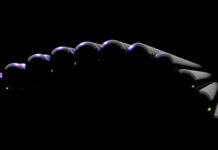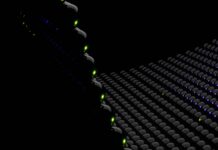Power Optimizer is a term that can refer to various technologies and strategies aimed at optimizing power consumption, improving energy efficiency, and maximizing the performance of power systems. It encompasses a wide range of techniques, devices, and software applications that help manage and control power usage in different settings, such as residential, commercial, and industrial environments. Whether it’s reducing energy waste, enhancing power generation, or optimizing energy distribution, Power Optimizer plays a crucial role in promoting sustainable and efficient energy practices.
In the context of renewable energy systems, Power Optimizer typically refers to a specific device used in photovoltaic (PV) solar installations. These devices, commonly known as PV power optimizers, are designed to maximize the power output of each individual solar panel, thereby optimizing the overall performance of the solar array.
PV power optimizers work by mitigating the impact of factors that can reduce the efficiency of solar panels, such as shading, panel mismatch, and varying environmental conditions. By tracking the maximum power point (MPP) of each panel individually, power optimizers ensure that each panel operates at its optimal voltage and current levels, leading to higher overall energy production.
Now, let’s delve into a list of ten important things you need to know about PV power optimizers:
1. Enhanced Power Harvesting: PV power optimizers provide a significant boost to the overall power harvesting capability of a solar array. By mitigating the effects of partial shading, panel mismatch, and other performance limitations, power optimizers enable each solar panel to operate at its highest potential, resulting in increased energy production.
2. Individual Panel Optimization: Unlike traditional string inverter systems, which optimize the entire array as a single unit, power optimizers focus on maximizing the output of each individual solar panel. This individual panel optimization ensures that even if one panel underperforms, it does not affect the performance of the entire array, thus increasing the overall system efficiency.
3. Monitoring and Troubleshooting: Power optimizers often come equipped with advanced monitoring capabilities that allow system owners and installers to remotely monitor the performance of each panel in real-time. This monitoring functionality enables early detection of any potential issues, simplifies troubleshooting, and facilitates timely maintenance, ensuring the system operates optimally.
4. Safety Features: PV power optimizers incorporate safety features that contribute to the overall safety of the solar installation. These features include rapid shutdown capabilities, which can quickly deactivate the DC voltage in case of emergencies or maintenance requirements, reducing the risk of electric shock and fire hazards.
5. Design Flexibility: Power optimizers offer design flexibility, allowing for different panel orientations, tilts, and configurations. With power optimizers, panels with different orientations or shading profiles can be integrated into the same string, maximizing energy production potential even in challenging installation scenarios.
6. Increased System Reliability: By decoupling the panels from the traditional string inverter architecture, power optimizers help improve the overall reliability of the solar system. If a panel malfunctions or experiences shading, the power optimizer ensures that it has minimal impact on the rest of the array, maintaining consistent power generation.
7. Scalability and Expandability: Power optimizers facilitate system scalability, allowing for easy expansion of the solar array as power needs grow. Additional panels can be integrated with existing optimizers without affecting the performance of the previously installed components, streamlining the process of system expansion.
8. Higher Return on Investment: Due to their ability to maximize power output, PV power optimizers can significantly increase the return on investment (ROI) of a solar installation. By generating more electricity, optimizing system performance, and reducing the impact of shading, power optimizers help accelerate the payback period and enhance the overall financial benefits of the system.
9. Improved Energy Efficiency: Power optimizers play a crucial role in improving the energy efficiency of a solar PV system. By optimizing each panel individually, power optimizers minimize energy losses caused by shading, soiling, or panel degradation. This increased efficiency translates into more usable electricity generated from the same sunlight, making the solar installation more environmentally friendly and reducing reliance on other energy sources.
10. Compatibility with Different System Configurations: Power optimizers are compatible with various system configurations, allowing for seamless integration into new or existing solar PV installations. Whether it’s a residential rooftop system, a large-scale commercial array, or a complex solar project with multiple orientations, power optimizers can adapt to diverse setups, maximizing energy output and system performance.
In summary, PV power optimizers are essential components in solar PV systems, particularly for installations facing shading, panel mismatch, or challenging environmental conditions. By individually optimizing the performance of each solar panel, power optimizers enhance energy harvesting, increase system efficiency, and improve overall reliability. With advanced monitoring capabilities, safety features, and design flexibility, power optimizers contribute to a higher ROI, reduced environmental impact, and a more sustainable energy future.
It is worth noting that the term “Power Optimizer” may also be used in different contexts beyond the scope of solar PV systems. It can refer to software applications or algorithms used in power management systems, energy-efficient appliances, or even power grid optimization strategies. In these cases, the focus is on optimizing power consumption, load balancing, or improving the efficiency of energy distribution. The specific details and applications may vary depending on the context in which the term is used.
In conclusion, Power Optimizer is a broad term encompassing various technologies and strategies aimed at optimizing power usage, improving energy efficiency, and maximizing the performance of power systems. In the realm of solar PV systems, PV power optimizers play a critical role in enhancing energy production, mitigating the impact of shading and panel mismatch, and ensuring system reliability. With their ability to individually optimize each solar panel, power optimizers contribute to increased power output, improved ROI, and a more sustainable energy future. Whether it’s in the context of solar PV installations or other power management systems, Power Optimizer technologies continue to drive advancements in energy efficiency, paving the way for a greener and more efficient world.


















